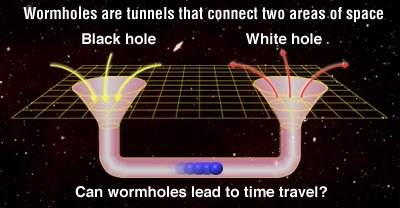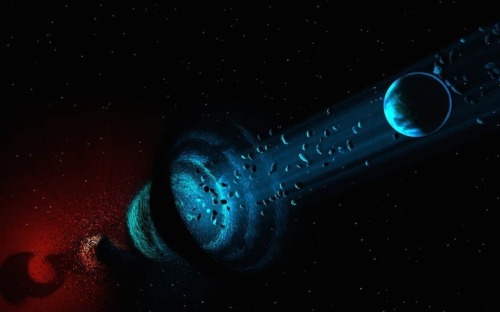“In 1972, Edward Lorenz Gave A Presentation Titled: “Predictability: Does The Flap Of A Butterfly’s

“In 1972, Edward Lorenz gave a presentation titled: “Predictability: Does the flap of a butterfly’s wings in Brazil set off a tornado in Texas?” The term “butterfly effect” was born. Lorenz, who was born on this day in 1917, was a pioneer of chaos theory, which analyzes how subtle changes in the initial conditions of a system can lead to widely differing outcomes. This 2013 Physics Today article examines Lorenz and the birth of chaos theory.” - Physics Today
Chaos at fifty by Adilson E. Motter and David K. Campbell is an article that lays out the discovery of chaos. I found it a very satisfying and informative read about dynamical systems, the butterfly effect, bifurcations, predictability and fractals. You should probably go check it out by clicking on the bolded title. 👍
“Chaos sets itself apart from other great revolutions in the physical sciences. In contrast to, say, relativity or quantum mechanics, chaos is not a theory of any particular physical phenomenon. Rather, it is a paradigm shift of all science, which provides a collection of concepts and methods to analyze a novel behavior that can arise in a wide range of disciplines.” - Chaos at fifty
Image above: “The Lorenz attractor, as revealed by the never-repeating trajectory of a single chaotic orbit. The spheres shown here represent iterations of the so-called Lorenz equations, calculated using the original parameters in Edward Lorenz’s seminal work. (Spheres are colored according to the iteration count.) From certain angles, the two lobes of the attractor resemble a butterfly, a coincidence that helped earn sensitive dependence on initial conditions its nickname—the butterfly effect. An animated visualization of the attractor is available here. (Image courtesy of Stefan Ganev.)”
More Posts from Sleepysneezeydopeydoc-blog and Others


These chemists just won the Nobel Prize with tiny machines
Good things come in small packages; prestigious things come in microscopic ones. On Wednesday, the Royal Swedish Academy of Sciences announced that three European chemists won the Nobel Prize in chemistry for creating the “world’s smallest machines.” The creators eventually see the tiny machines entering the human blood-stream for a medical purpose.
Follow @the-future-now

Easy win for Tesla 🖖





Wormholes
Also known as Einstein-Rosen Bridges are theoretically possible going by Einstein’s theory, and equations of general relativity. Basically wormholes take advantage of our 3 dimensional space and are able to “bend” it. Picture a sheet of paper; now put two circular holes on each end of that sheet of paper. Normally the quickest way to join one point to the other would be to draw a straight line between them. Now instead, you could fold the piece of paper so each hole is touching meaning that there is no longer any distance between them. This is an analogy of how a wormhole works except instead of a circular hole on a 2D plane, the entry and exit points of an Einstein-Rosen bridge can be visualised as spheres in a 3D space.
While the theory of general relativity allows the existence of wormholes, we have not yet found physical evidence. The first wormhole solution discovered was the Schwarzschild wormhole presented in the Schwarzschild metric describing an eternal black hole. However this is not stable enough and would collapse before anything could cross from one end to the other. Traversable wormholes could exist of there was a form of exotic matter with a negative energy to stabilise them.
The Casmir effect shows that quantum field theory allows the energy density in some space to be relatively lower than the ordinary vacuum of space. A lot of physicists (like Stephen Hawking) use this to argue that it is possible to stabilise a traversable wormhole. However there are no known natural processes that would cause a traversable wormhole to stabilise.
The quantum foam hypothesis can be used to suggest the spontaneous appearance of tiny black holes at the Planck scale. Stable versions of these tiny wormholes have been suggested as dark matter candidates. It is also possible that one of these wormholes opened into a previously empty space from another universe, held open by a cosmic string (1D string) with a negative mass then it could be inflated to a macroscopic size by cosmic inflation. Is it possible this happened at the start of the Big Bang?

Dudeney dissection from a square to an equilateral triangle. Only 4 pieces!
















An all-time classic to celebrate St. Valentine’s day! 🤗💘
-
 sleepysneezeydopeydoc-blog reblogged this · 8 years ago
sleepysneezeydopeydoc-blog reblogged this · 8 years ago -
 sleepysneezeydopeydoc-blog liked this · 8 years ago
sleepysneezeydopeydoc-blog liked this · 8 years ago -
 gxnseytheiii liked this · 8 years ago
gxnseytheiii liked this · 8 years ago -
 devasur-blog reblogged this · 8 years ago
devasur-blog reblogged this · 8 years ago -
 devasur-blog liked this · 8 years ago
devasur-blog liked this · 8 years ago -
 hazy--love liked this · 8 years ago
hazy--love liked this · 8 years ago -
 mauriciomh35-blog liked this · 8 years ago
mauriciomh35-blog liked this · 8 years ago -
 sammiethesamurai liked this · 9 years ago
sammiethesamurai liked this · 9 years ago -
 pumiis reblogged this · 9 years ago
pumiis reblogged this · 9 years ago -
 cognitivelyadvancedzygote liked this · 9 years ago
cognitivelyadvancedzygote liked this · 9 years ago -
 stars-moonlight-meteorites reblogged this · 9 years ago
stars-moonlight-meteorites reblogged this · 9 years ago -
 talesofasadphysicsgirl-blog liked this · 9 years ago
talesofasadphysicsgirl-blog liked this · 9 years ago -
 sodium-vapors liked this · 9 years ago
sodium-vapors liked this · 9 years ago -
 mariomedhat reblogged this · 9 years ago
mariomedhat reblogged this · 9 years ago -
 mariomedhat liked this · 9 years ago
mariomedhat liked this · 9 years ago -
 physimath liked this · 9 years ago
physimath liked this · 9 years ago -
 levitatedaily liked this · 9 years ago
levitatedaily liked this · 9 years ago -
 thomasperrein liked this · 9 years ago
thomasperrein liked this · 9 years ago -
 samael-krains liked this · 9 years ago
samael-krains liked this · 9 years ago -
 apersonpeople334 reblogged this · 9 years ago
apersonpeople334 reblogged this · 9 years ago -
 apersonpeople334 liked this · 9 years ago
apersonpeople334 liked this · 9 years ago -
 baby-in-a-staight-jacket liked this · 9 years ago
baby-in-a-staight-jacket liked this · 9 years ago -
 andyspixels-blog liked this · 9 years ago
andyspixels-blog liked this · 9 years ago -
 psychopoopypants-blog liked this · 9 years ago
psychopoopypants-blog liked this · 9 years ago -
 the-physics-detective reblogged this · 9 years ago
the-physics-detective reblogged this · 9 years ago -
 astroaspirations reblogged this · 9 years ago
astroaspirations reblogged this · 9 years ago -
 bisopod liked this · 9 years ago
bisopod liked this · 9 years ago -
 adhdchemist-blog reblogged this · 9 years ago
adhdchemist-blog reblogged this · 9 years ago -
 adhdchemist-blog liked this · 9 years ago
adhdchemist-blog liked this · 9 years ago -
 darkstarbaby liked this · 9 years ago
darkstarbaby liked this · 9 years ago -
 ntworkstation4-blog reblogged this · 9 years ago
ntworkstation4-blog reblogged this · 9 years ago -
 davethoyo-blog reblogged this · 9 years ago
davethoyo-blog reblogged this · 9 years ago -
 davethoyo-blog liked this · 9 years ago
davethoyo-blog liked this · 9 years ago -
 porn-emotion reblogged this · 9 years ago
porn-emotion reblogged this · 9 years ago -
 picturesquephysics reblogged this · 9 years ago
picturesquephysics reblogged this · 9 years ago